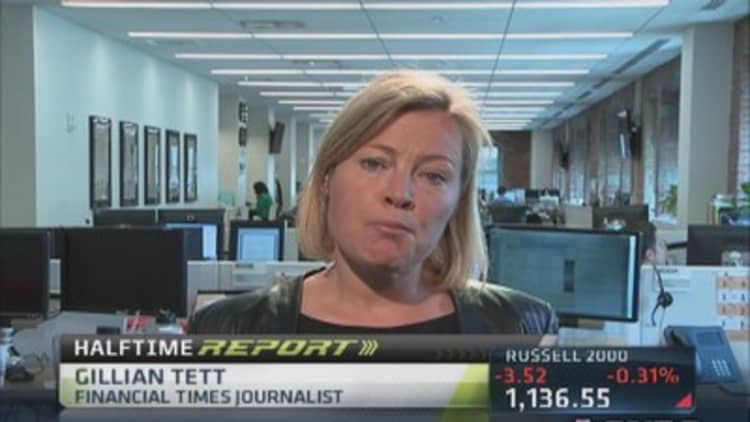With the market's traditional measures of risk giving off Pollyanna-like signals of complacency, some analysts are wondering if investors should worry about not being worried.
Indicators signal clear sailing ahead: credit spreads are narrowing, suggesting little concern about default risks, and the is hovering around pre-financial crisis levels.

"It's ridiculously complacent," said Evan Lucas, market strategist at IG, noting the price of protection, measured by the Vix, is at its lowest since 2005, suggesting the market is overly confident. "That's when retail clients start to jump on board. It's always at the end of a rally," he said.
Even the Federal Reserve has gotten in on the complacency concern.
Read More The risks of VIX-tied investing
"Volatility in the markets right now is unusually low," New York Federal Reserve Bank President William Dudley said last month, according to a Reuters report. "I am nervous that people are taking too much comfort in this low-volatility period and as a consequence of that, taking bigger risks."
To be sure, not everyone is on the complacency bandwagon.
"To say investors are 'complacent' is, in our minds, utter and total nonsense," Dan Greenhaus, chief strategist at BTIG, said in a note Thursday. "Saying others are 'complacent' is a shorter way of saying 'I've been concerned about X and thought Y would happen as a result and it didn't, so everyone else must be complacent,'" he added. "Because an outcome someone thought might happen didn't happen, doesn't mean others are complacent. It means they were correct."
Read MoreRecent market rally lacks conviction
He noted that conversations with clients indicate no shortage of worries, ranging widely from the Fed ending its asset purchases to high stock valuations to PC demand and Ukraine.
"There is much to worry about as there was in 2010, 2011, 2012 and 2013. And worry everyone did," he said.
Low borrowing costs, which make taking on risk cheap, underlie much of the concern. While many analysts expected U.S. Treasury yields would begin rising this year as the Fed began tapering its asset purchases, instead, they have dropped, touching 11-month lows.
But some analysts don't believe low bond yields are necessarily a matter of concern. Fund giant Pimco expects yields to remain low, dubbing the market outlook "the new neutral." It expects central banks will aim toward real policy rates at zero, compared with the current negative real rates. That would be well below "normal" real rates of around 2 percent, with a 4-5 percent nominal policy rate, which was common in decades past, it said.
Read More How low can volatility go? Wall Street laments 'brutal churn'
"If the future resembles those neutral policy rates, then the investment implications are striking: low returns yet less downside risk than investors currently expect; an end to bull markets as we've known them, but no perceptible growling from the bears," it said in a note last month. "It can be a rather comforting pacifier, suggesting that yields, credit spreads and P/E (price-to-earnings) ratios themselves are more rational than many market observers fear."
—By CNBC.Com's Leslie Shaffer; Follow her on Twitter @LeslieShaffer1

